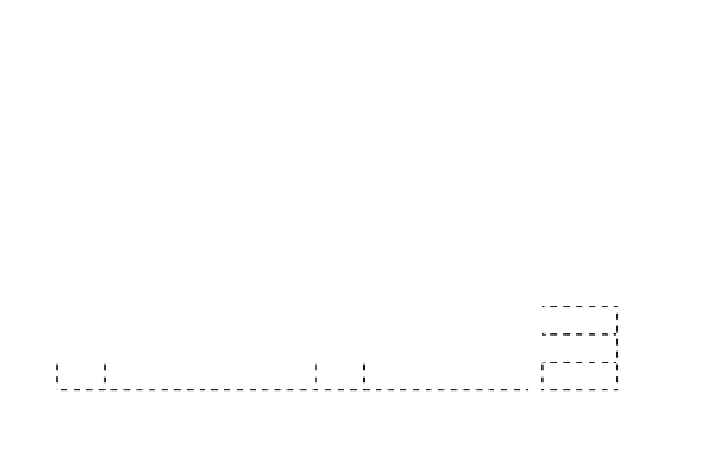Biomedical Engineering Reference
In-Depth Information
by Rule (A), taking two consecutive elements together. If both of them are less
than 10, they are nibble combined to form a single encoded byte. So, a combined
encoded byte in d[] can have value 0-99. Hence, a 2:1 compression is achieved
here. Else, two new encoded elements are generated, each having value same as
generating elements, with an offset of 100. In such a case, no compression is
achieved. So, uncombined encoded elements can have value 100-199.
The generalized structure of magnitude and sign encoding scheme and gener-
ation of array d is represented in Fig.
5.4
. Hence, the number of magnitude
encoded elements in array d[] corresponding to each group in array c[] may be
minimum 4 (maximum combinations) to maximum 8 (no combination). So, a
group of 8 elements in array c[] is encoded as a single encoded sign byte followed
by magnitude encoded elements.
An illustrative example is shown in Fig.
5.5
using first group of 8 elements in
array c[]. The encoded sign byte of next group of elements c
9
-c
16
is placed in d
8
,
and corresponding magnitude encoded elements are to be placed from d
9
onwards,
and so on.
The next step utilizes Rule (B) to encode the zero sequences arising out of the
isoelectric segments PQ, ST, and TP of the ECG waveform. The first difference
array corresponding to these portions, after quantization and rounding off generate
a number of consecutive zero elements. A first stage 2:1 compression takes place
at the magnitude encoding phase, i.e., during formation of array d[], where two
successive zeros are nibble combined to form a single zero element. Even after
that, there may be occurrences of consecutive zero elements in array d[], if array
c[] contains more than 4 consecutive zero elements. An encoding scheme for
zero sequence compression is devised by which a new array e[] is generated. The
d1
d2
.
d6
d7
d
8
…
…
Encoded Sign
byte
(c1-c8)
Encoded magnitude
elements (c1-c8)
Encoded Sign
byte
(c9- c16)
Encoded magnitude elements
(c9-c16)
…
Fig. 5.4
Generalized structure of array d[]
c1
c2
c3
c4
c5
c6
c7
c8
c9
c10
c11
c12
02
05
32
03
-01
-03
0
0
…
…
…
……
Originating array c[] - (c
1
-c
8
)
…
.
d1
d2
d3
d4
d5
d6
d8
d9
d10
d11
d12
….
12
25
132
103
13
0
….
sign
magnitude encoding sign magnitude encoding
Encoded elements in array d[] - (d
1
-d
6
)
Fig. 5.5
Illustration of sign and magnitude encoding














































































































































































Search WWH ::

Custom Search